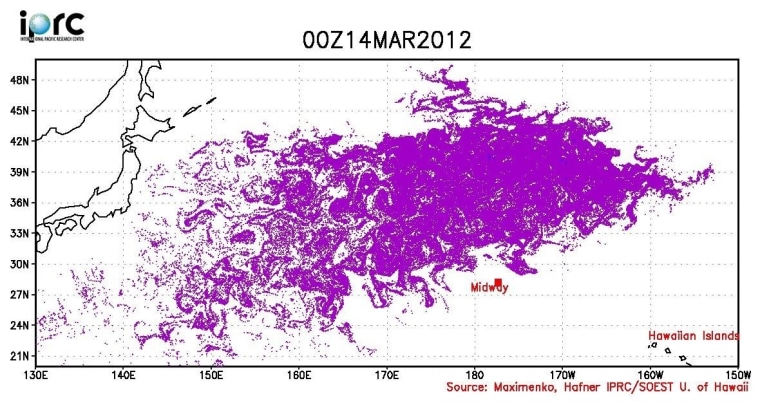Just over a year ago, Japan experienced one of the worst tragedies in modern history: the terrible 8.9-magnitude earthquake, followed by a devastating tsunami that took the lives of thousands, injured even more, and destroyed coastal towns. Japan is still dealing with the aftermath -- a 12-mile "exclusion zone" around the Fukushima Daiichi nuclear plant remains under lockdown -- and the threat of radiation remains fresh. Houses and stores in the area have been abandoned. Families still search for the remains of lost loved ones throughout the country.
And then there's the question of the debris, an estimated 20 million tons of it. Some portion of that debris, though it is unknown how much, is making its way toward the West Coast of the United States and Canada. It has been predicted to reach the Hawaiian islands this spring. Computer-generated models from the National Oceanic and Atmospheric Administration and researchers over at the University of Hawaii say that the West Coast won't start getting debris until early next year. But after months of speculation about when it might get here, the United States may seeing pieces of it sooner than expected.
Some Washington state beach dwellers believe the debris is alreadywashing up on the West Coast. The New York Times reports on a beach-comber who has been finding dozens of buoys with Japanese writing on them. He believes they were ripped from their moorings by the tsunami. For the most part, researchers still think the debris from Japan will end up cycling in the "great Pacific garbage patch," but that view is not universal. From the NYT:
“I feel like Paul Revere running through town, saying ‘The British are coming!’ and no lights are coming on,” said a retired oceanographer, Curtis Ebbesmeyer. “The tsunami debris is here, but no one is listening.”
Little is known about the stuff the beach-combers are picking up, just as little is known about what the tsunami debris contains or how much will reach North American shores. But its lonely migration across the Pacific Ocean serves as a stark reminder that the tragedy is not over or forgotten -- not for Japan, and not for the world.
